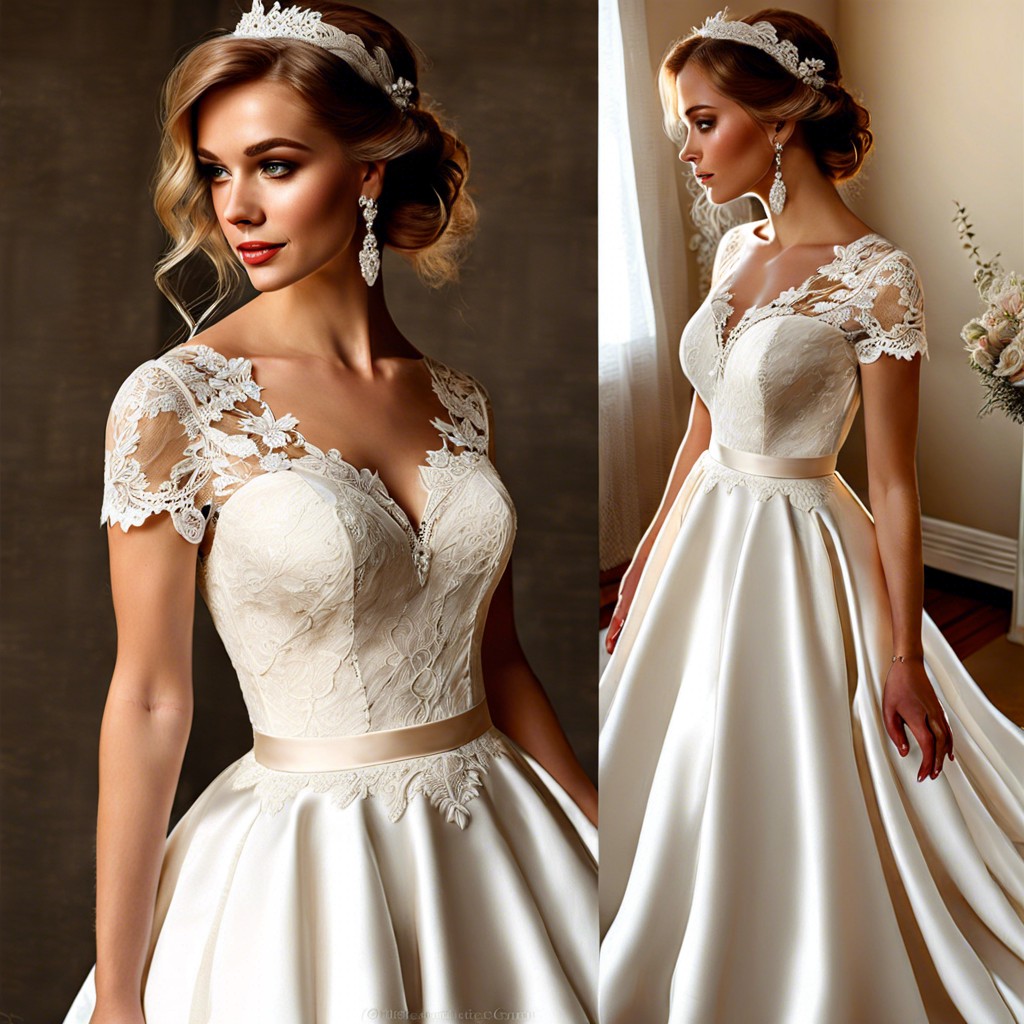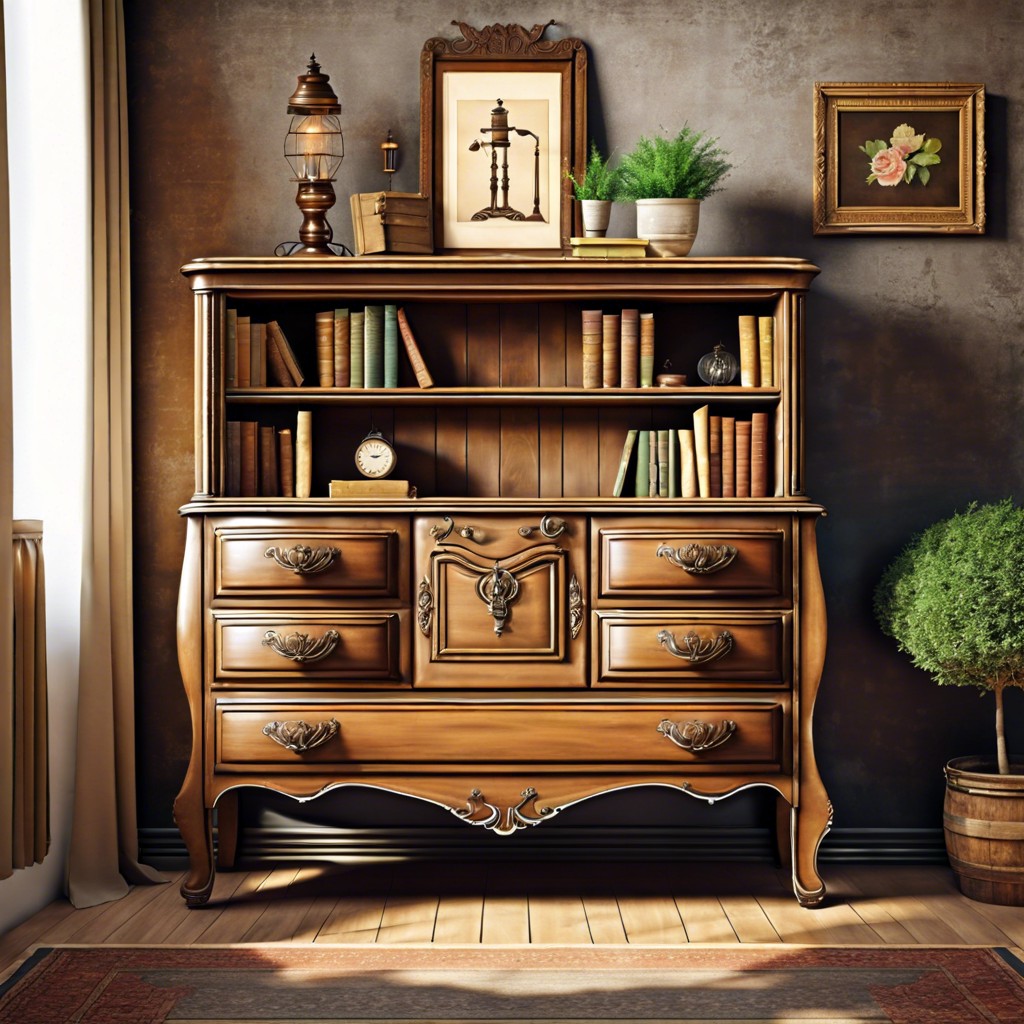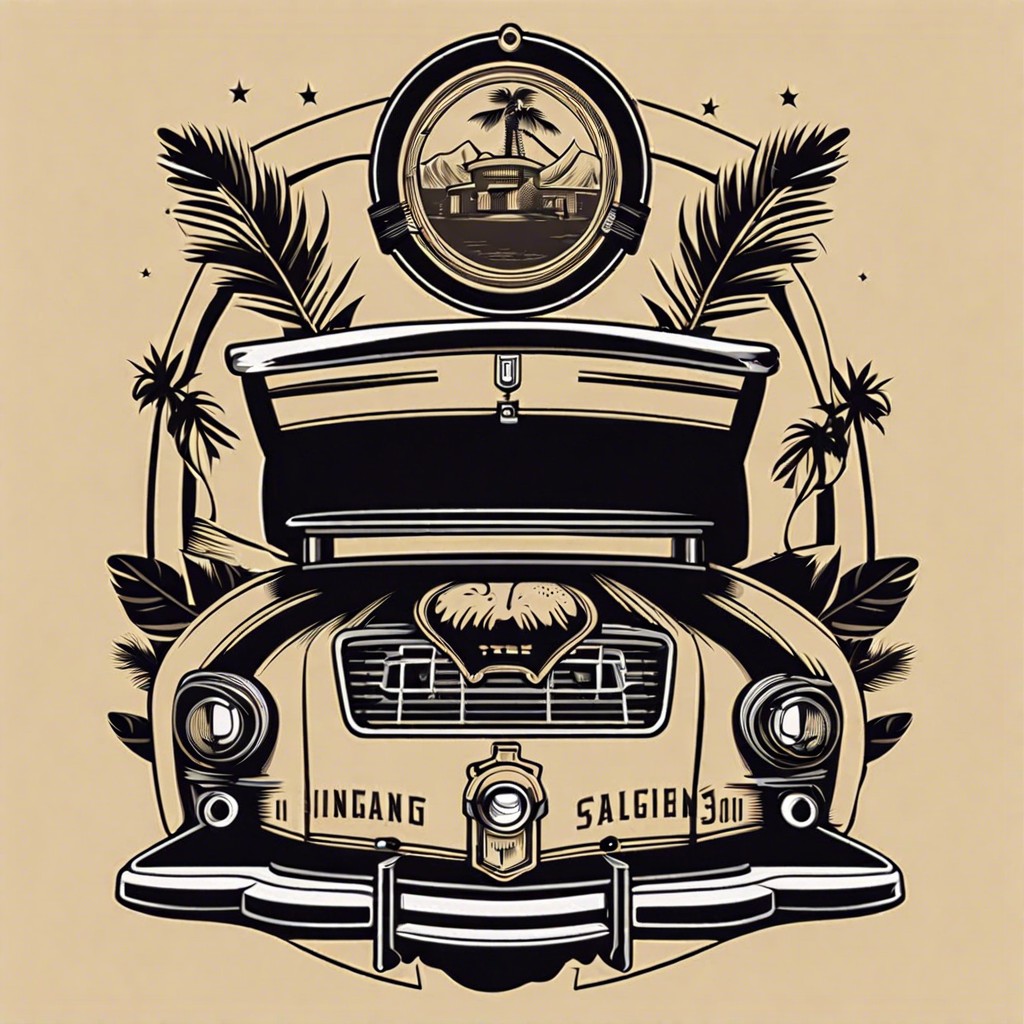Last updated on
Discover practical tips for selecting the perfect vintage desk to add character and function to your space.
Key takeaways:
- Vintage desks have evolved in design and function throughout history.
- Determining authenticity involves examining wood, craftsmanship, hardware, and markings.
- Quality craftsmanship is evident in dovetail joints, solid wood construction, and original hardware.
- Condition, provenance, style, maker’s mark, materials, size, and functionality affect value.
- When buying online or at auctions, scrutinize pictures, ask for more information, attend previews, set a budget, and familiarize yourself with the return policy.
Historical Context and Evolution of Vintage Desks
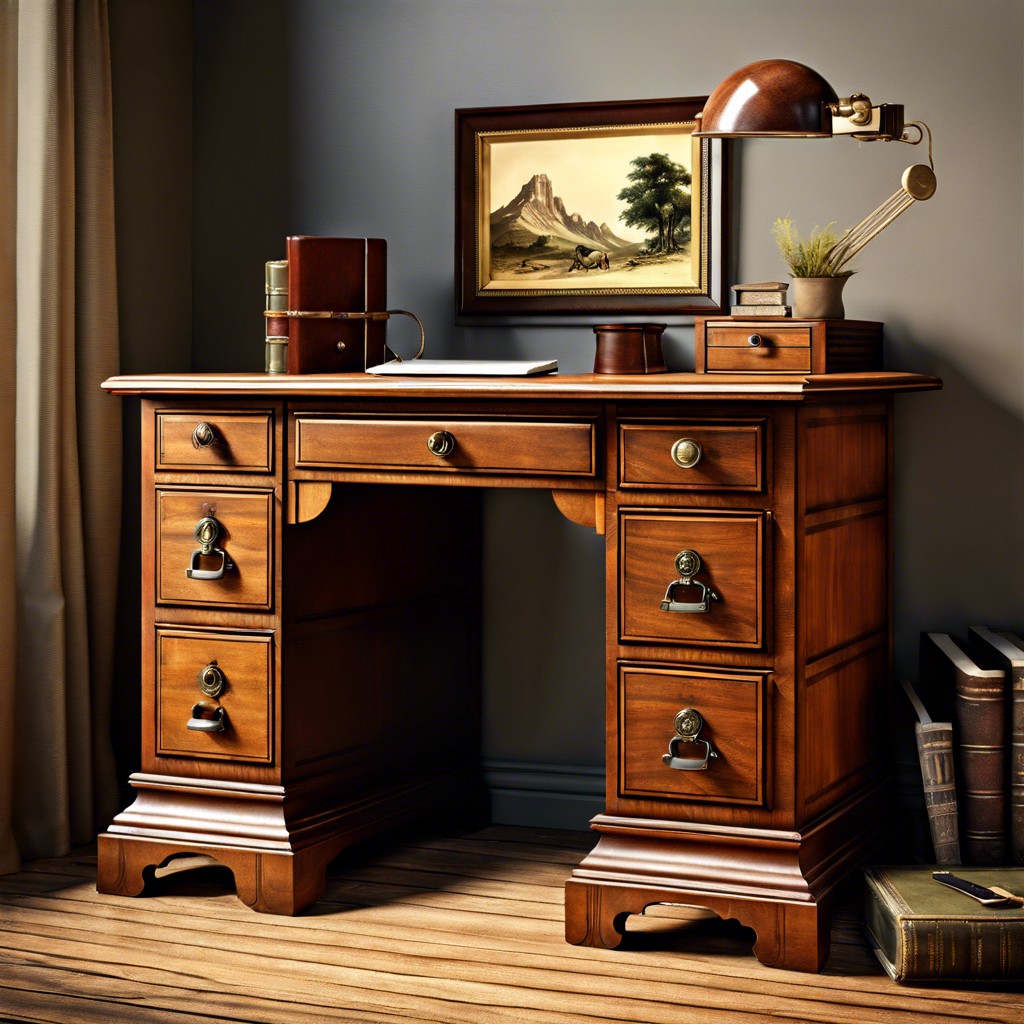
Throughout history, desks have born witness to the changing tides of design and function, symbolizing status and intellectual pursuit. In the 17th century, the ornate bureaus reflected the Baroque’s grandeur, often reserved for the affluent. The subsequent century saw slimmer lines of the Georgian period, with mahogany reigning supreme.
As industry advanced, the 19th century ushered in the roll-top desk, coveted for privacy. By the Victorian era, desks with intricate carvings and multiple drawers became a centerpiece in homes and offices.
The 20th century held its own with an array of styles from Art Nouveau’s fluidity to the Art Deco’s geometric sharpness. Mid-century modern designs offered a clean, simplified aesthetic that still holds a strong influence in today’s décor. Infusing this brief historical perspective can greatly assist one in dating a vintage desk and appreciating its design lineage.
Identifying Authenticity and Age
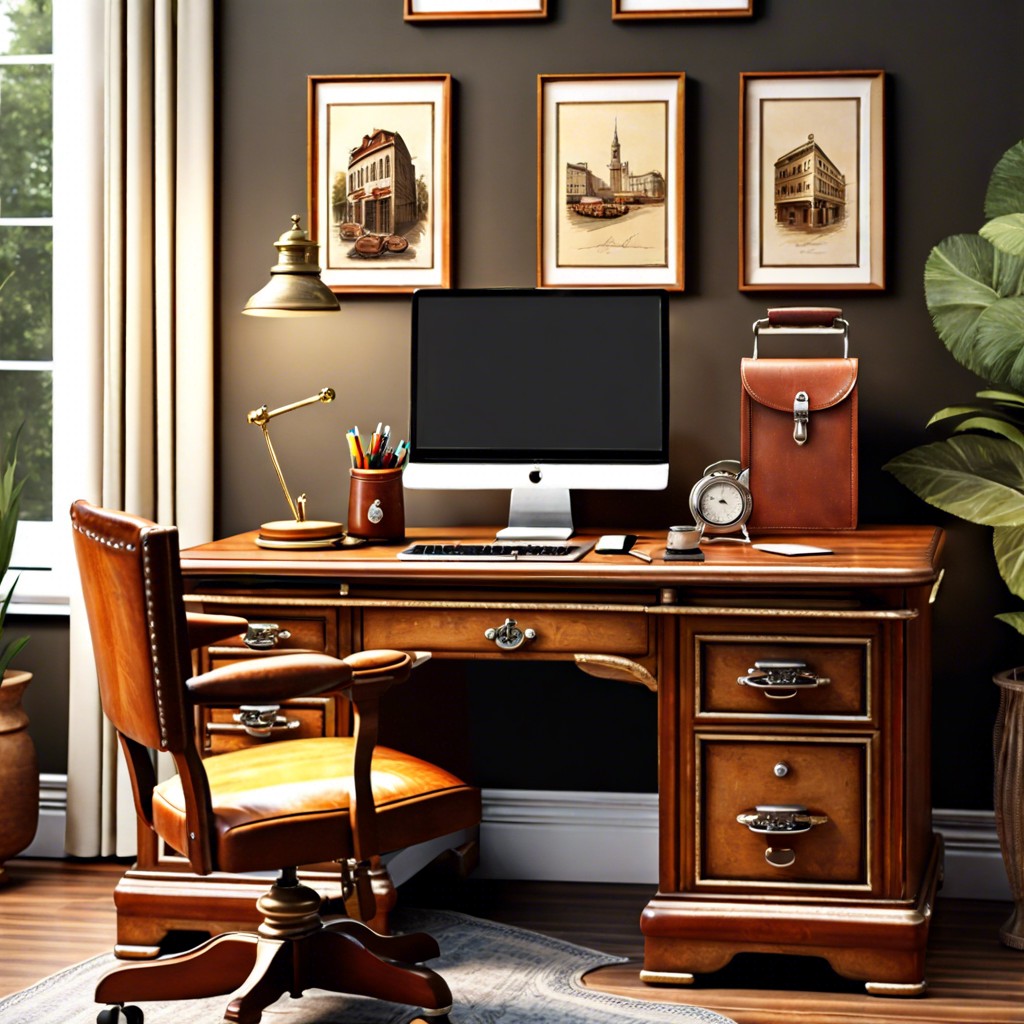
Determining the age and authenticity of a vintage desk is akin to detective work, involving careful observation and knowledge. Here are some clues to guide you:
Woods tell tales. Older desks were typically made from hardwoods like mahogany, walnut, and oak. The patina, a sheen that develops with age, is a golden ticket to gauging antiquity.
Craftsmanship speaks volumes. Dovetail joints, those interlocking fingers in drawers, are a hallmark of quality and often indicate hand-crafted age. Unevenness can suggest pre-industrial creation.
Hardware holds history. Original hardware, often made of brass or iron, can show signs of wear and have a particular design style. Newer screws and bolts scream modern interventions.
Maker’s marks and labels act as the desk’s fingerprint. Seek out stamps, labels, or signatures. These can authenticate a piece and sometimes even date it.
Wood shrinkage subtly points to age. Over time, wood contracts across the grain. Circular saw marks generally mean post-1830, whereas straight saw marks could imply an older piece.
By poring over these details, you’ll inch closer to unveiling the true identity of your vintage desk. Keep in mind, anomalies are as common as fake mustaches at a detective’s convention, so if you’re unsure, consult a seasoned appraiser.
Signs of Quality Craftsmanship in Vintage Desks
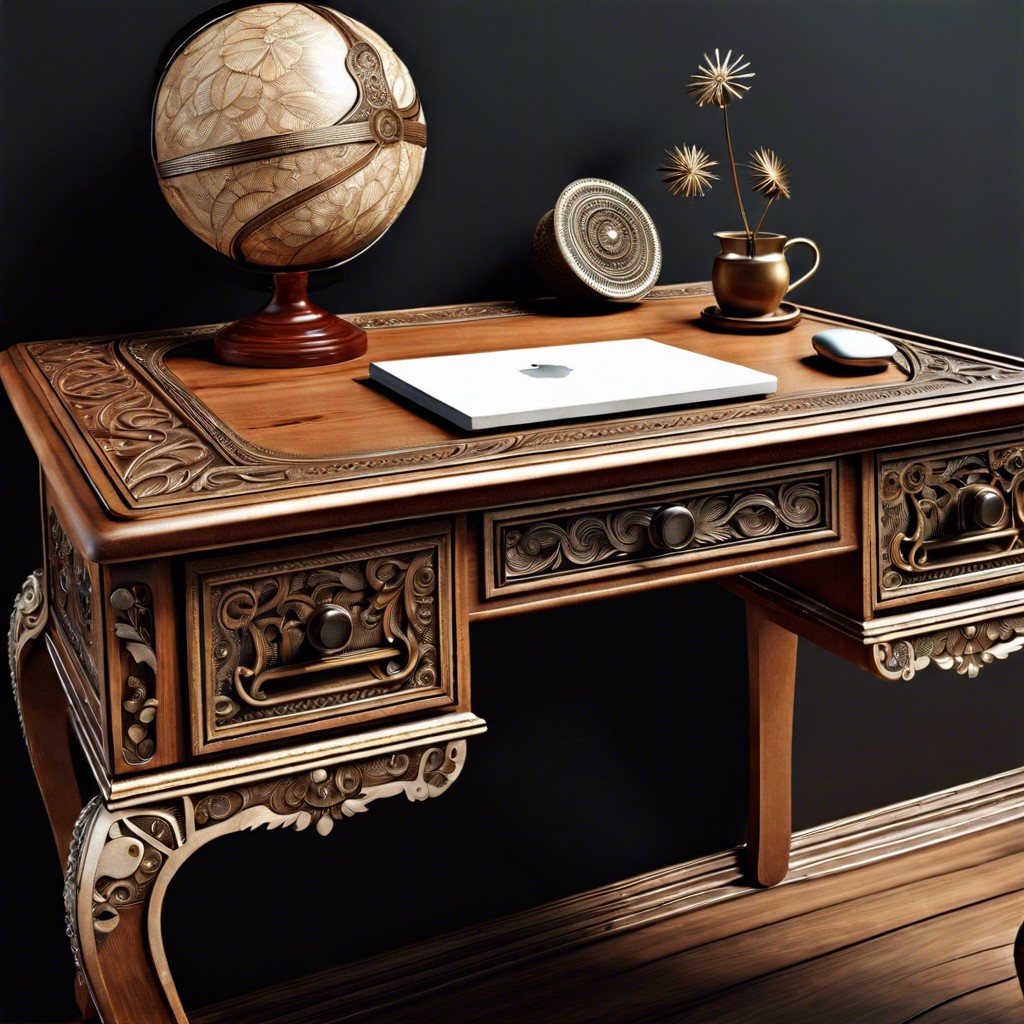
Fine woodworking tells a tale as rich as the written word. Delve into the drawers and joints of a vintage desk to discern its quality. Dovetail joints, with their interlocking teeth, are telltales of time-honored construction. Look for symmetry in these connections; a hand-crafted dovetail will not be overly uniform — a whisper of the artisan’s touch.
Wood tells its own story. Solid wood construction, as opposed to veneer over particle board, heralds a piece’s age and enduring strength. Examine the patina; the gentle wear and deepened color come from years of use and add to the desk’s charm and authenticity.
Hardware is the jewelry of furniture. Original handles and knobs, often made from brass or other noble metals, age gracefully and imbue a sense of history. Those patinated with time indicate a piece that likely saw decades of use.
Responding to practicalities with elegance, well-made vintage desks often feature intricate compartments, slots, and hidden nooks. Such brilliance in design marries function with delight, revealing a desk that served its purpose well.
Harmony in design binds all these elements. Even without knowing the maker, a well-crafted desk stands as a cohesive unit, where proportion and aesthetics align to create a functional work of art.
Scrutinize for signs of repair or replacement; these can affect both value and integrity. Authenticity is often in the integrity of the materials and the preservation of the original design. The desk’s form and function should be as relevant now as when it was first constructed.
Factors Affecting the Value of Vintage Desks
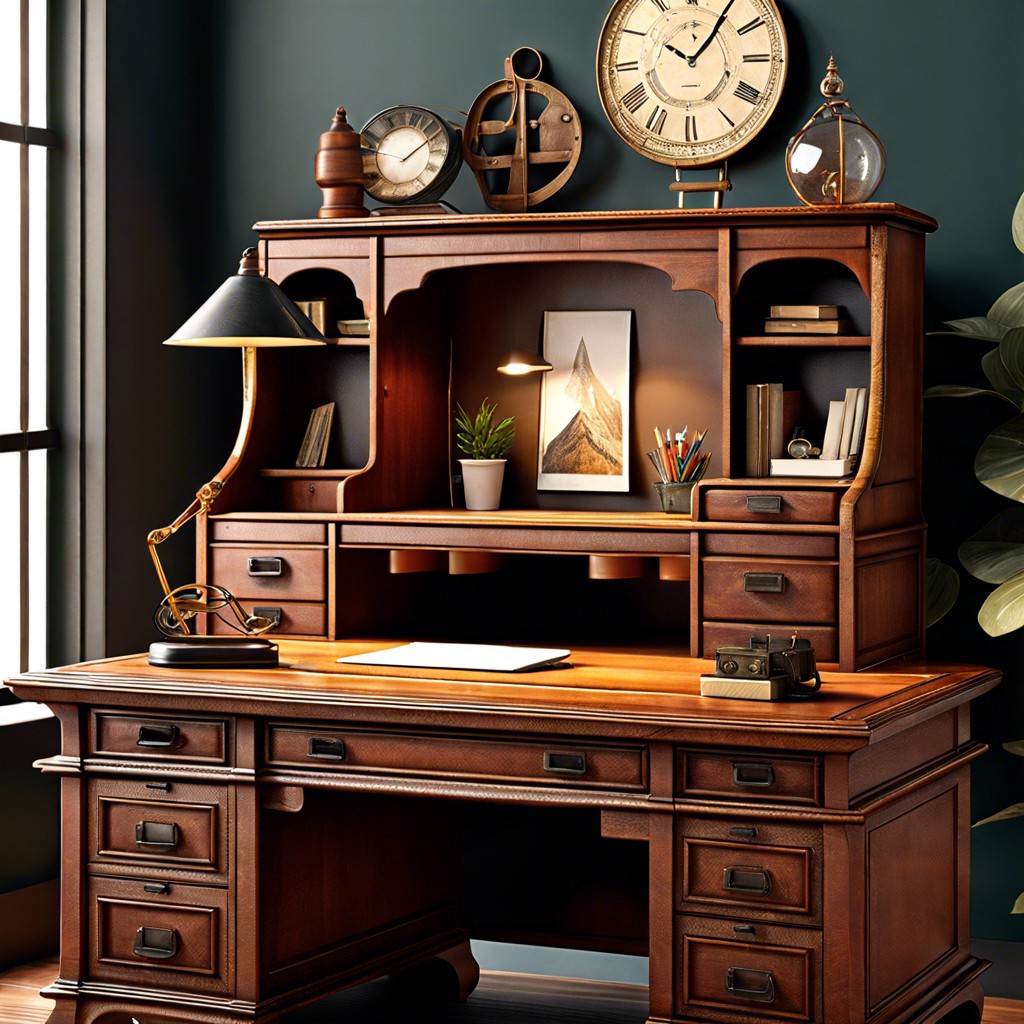
Condition stands as a major influencer of a vintage desk’s worth. Scratches and scuffs may tell a story but extensive damage can diminish appeal. Restoration work can enhance or undermine value; the key is preserving originality while maintaining functionality.
Provenance adds layers of intrigue and can elevate the value significantly. A desk with a verified link to a historical figure or event carries with it a cachet that collectors are keen to acquire.
Style and period are pivotal in assessing value. Desks from periods known for high artisanship, like the Georgian or Victorian eras, often command higher prices. Rarity and demand drive up prices as well; common models fetch less than those rarely seen on the market.
Maker’s mark can turn a simple desk into a coveted item. Desks crafted by renowned makers or workshops have a pedigree that is highly prized in the antique furniture field.
Materials used also impact a desk’s value. Hardwoods like mahogany, oak, and walnut, known for their durability and allure, are typically more sought after than those made from less durable softwoods.
Size and functionality matter to modern buyers. Even with a penchant for the past, practical considerations come into play—will it fit in the space? Is it suitable for contemporary use?
The desk’s history of ownership, aesthetic appeal, and authenticity certificates also add weight to its market value. Each piece tells a unique story, making the market both diverse and vibrant.
Tips for Buying Vintage Desks Online or At Auctions

Dive right into the thick of things with a clear head and a keen eye. When shopping for a vintage desk online or at auction, keenness and preparedness go a long way. First, scrutinize the pictures provided. Cast a discerning eye on details like wood grain, hardware, and joinery—tell-tale signs of period and craftsmanship.
A picture speaks volumes, but the true story lies beyond. Reach out to sellers for a condition report or additional photos; don’t hesitate to inquire about the desk’s life story.
Auction houses often allow for a preview period. If possible, attend. Engage with the piece. Open drawers, feel the surface, assess the stability firsthand—nothing beats the tactile connection for making informed decisions.
Remember, bidding is a sport of sorts. Set your limit in advance, and stay rooted in it to avoid the adrenaline-fueled temptation to overextend financially. Consider added costs like buyer’s premium and shipping, which can add a substantial sum to your winning bid.
Lastly, a wise buyer is an educated one. Familiarize yourself with the return policy. Online pictures or auction environments can sometimes cast a different hue on reality. Knowing the possibility of return will provide peace of mind and a safety net for your investment.

